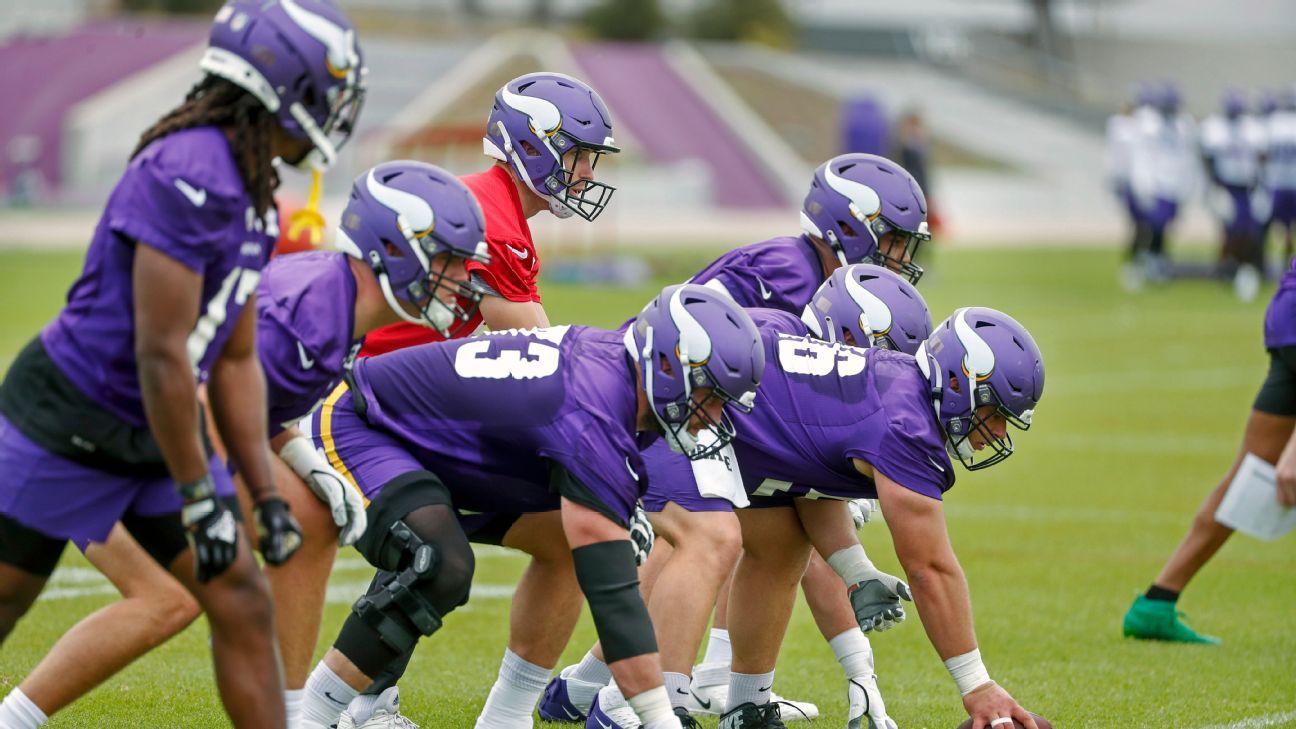EAGAN, Minn. – The Minnesota VikingsThe problem was discovered by the new coaching team. Kevin O’Connell, the coach, wanted to include a list of plays that he had used in his previous role. Los Angeles Rams‘Offensive coordinator. Unfortunately, these plays were placed in what the Rams called their Rampage menu, named for the team’s mascot.
“We didn’t want that word,” stated Wes Phillips (Vikings offensive coordinator), who was previously an assistant Rams coach with O’Connell.
They used what O’Connell called “word banks” of the coaches to move around the room.
“Viktor”, the Vikings’ mascot didn’t sound right. “Ragnar,” an old mascot nickname, did not sound right. They eventually settled on “Rage”, which is a term that sometimes pops up in Norse mythology and Viking mythology.
NFL teams spend millions of money on their coaching staffs. They then spend hours creating new strategies and techniques for player growth. However, before all of that happens, coaches must go through the long-standing NFL tradition of creating unique terminology for their plays, cadences, and checks at the line. After Mike Zimmer’s eight-season tenure, this has led to Minnesota’s first major overhaul in verbiage for nearly a decade. This has pushed some of the team’s most seasoned veterans into extreme schoolhouse mode.
“It is wild,” says the receiver Adam Thielen Recent comments made on Pat McAfee’s show. “It’s some of the best learning that I’ve ever done. … “I’m an old man trying to figure out how to learn fast and the small details.”
• Jordan Love at a crossroads
• Glimpse at new-look Bears
• Smith’s physical style
• Okudah on the mend
Quarterback Kirk Cousins Flash cards were used by him to help him remember the words and match them up to the plays he was calling.
Cousins stated that it was an effective method, and has been for me. However, it is not one I have used often in the past. I was chuckling at the thought of that being how I was learning. You have to learn it some way. If this works, that’s great.
The NFL playbooks are one of the most guarded sports documents. However, the irony is that many teams use the same plays. This was evident in the Vikings’ shift from “Rampage” to “Rage”. Rarely does a new concept emerge. However, the terms used to call such plays change often for at least two main reasons. O’Connell explained that increased audio coverage during game broadcasts could reveal key clues about opponents. Regular updates are required.
O’Connell stated that TV copies are a valuable tool around the league. “Not only to hear analysts predict plays and such, but also to actually hear what you’re recording. [such as] “Cadences” and other things that we do at the line-of-scrimmage
O’Connell and other coaches also try to make words that can be connected to players and team members. O’Connell explained that it can be easier to understand the meaning of the words by explaining the why.
Cousins recalls a time that was shortly after the Washington Commanders drafted him in 2012. Kyle Shanahan, his offensive coordinator, was teaching a play called Arches. Cousins found it difficult to absorb and asked Shanahan about the reason he called it “Arches.” It turned out that the Rams’ “Greatest Show on Turf,” offense in the late 1990s and early2000s had popularized the play. At that time, the Rams were in St. Louis, which was home to the iconic Gateway Arch.
Cousins were able to remember that Shanahan had made that connection. He even included a video of Marshall Faulk and the Rams running the play.
Many of today’s NFL players were diaper-bound when the Rams played at St. Louis. Since then, “Arches,” has been updated several times.
While defensive terminology is usually simpler and less complex than other areas of the game, it needs to be changed frequently. The Vikings’ defensive players are getting ready for a new challenge as they learn the playcalls and scheme of Ed Donatell, their new defensive coordinator.
Inside linebacker: “You must know all the details.” Jordan Hicks said. “Then, there are internal adjustments within play. It’s almost as hard as the offensive side. For us, I realize that our calls may be a bit simpler than theirs — we have two-word offense calls and they have fifteen-word offensive calls. Even so, understanding the meaning and why it’s there is important.
So it’s not surprising to hear of a high level confusion and questions during Vikings spring practices. Thielen said that although “everything is clear”, he is still “swimming,” with a lot of material to learn in a very short time.
O’Connell has been running 11-on-11 drills at “jog through” speed since spring. This is partly to help him focus on mental processing and not physical perfection. It’s helpful to have playcalls which are easy to remember.
Cousins stated, “The ‘why” helps me learn it.” “I don’t ask, ‘Why?’ It can be very difficult. I respond, “If you tell me the why, it will help me remember it.” Their credit is due to intentionality [and] It was often more complicated than I thought when I asked this question.
